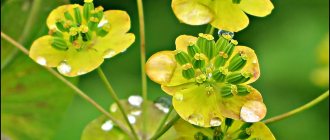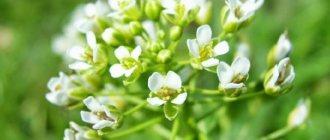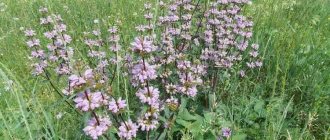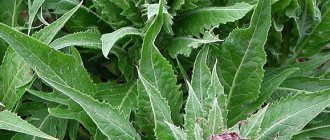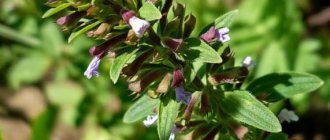Far Eastern lemongrass is a rather unusual plant, especially by Russian standards. This is a beautiful liana up to 15 meters long, which grows in the Far Eastern taiga, the stem of the plant is woody and covered with green leaves. In autumn, bright red berries ripen on the liana, which have a specific spicy, sour-salty, bitter (sometimes burning) taste. When rubbed, all parts of the plant emit a distinct lemon scent, which is how it got its name. Chinese lemongrass (as it is also called) has a wide spectrum of action and is very useful for the human body. Today we will take a closer look at the Far Eastern Schisandra plant. The benefits and harms, instructions for use, properties and indications for use will be described in this article.
Amazing composition of the plant
In China, they have known about Far Eastern Schisandra for a long time; the properties of the plant have always been used by the indigenous people, it has an effective tonic and refreshing effect. In Russia they learned about him much later.
The fruits of Far Eastern Schisandra contain special substances - lignans, which have a wide range of biological activity. According to scientists, it is due to these components that the therapeutic effect of the plant is achieved, which has an antitumor, antimicrobial, anti-inflammatory, antioxidant, and tonic effect. Far Eastern Schisandra (photos are in the article) is called an adaptogen, due to the stimulating effect of lignans on the central nervous system. Adaptogens are amazing natural substances that help increase the body's resistance in difficult conditions, such as sudden climate changes, intense physical and mental stress, oxygen starvation and other extreme situations. Such substances are not considered drugs and are not intended for the treatment of diseases in medical practice, but supporters of alternative medicine have been using adaptogens for tens of thousands of years. When used regularly, such substances are so capable of strengthening the immune system that the body overcomes even the most severe illnesses, therefore, Far Eastern Schisandra, along with ginseng, aralia, and eleutherococcus, can be classified as a plant for healthy people
Far Eastern Schisandra (berries) contains many organic acids (citric, malic, tartaric), vitamins E, C, sugars and pectins, anthocyanins, which have a powerful antioxidant effect, tannins (tannins), flavonoids (catechins). All parts of the plant contain essential oil; the seeds contain fatty oils rich in unsaturated fatty acids. The mineral composition of Chinese lemongrass is also extremely rich, although almost all macro- and microelements are present in small quantities - calcium, potassium, iron, zinc, manganese, copper, molybdenum, cobalt, aluminum, chromium, selenium, barium, iodine, strontium, nickel and others.
Glucosides and alkaloids, which are toxic substances, were not found in the berries of Schisandra chinensis.
Botanical description
Schisandra is light-loving, grows well in forests, along river banks, in forest clearings and edges, along forest roads. The plant is frost-resistant, but quite demanding of moisture. It does not respond well to both excessive dryness and abundant moisture; it prefers well-drained soils rich in organic compounds. It propagates mainly vegetatively, by rhizomes and cuttings, but propagation by seeds is also possible.
The length of the Schisandra vine is on average 6–8 m, but can reach 15 m; as it grows, it wraps around nearby shrubs and tree trunks, using them as a support. The rhizome is cord-shaped with numerous adventitious roots. The stem is branched, up to 2 cm in diameter, covered on top with bark, which in young plants is smooth, shiny and yellowish, and in old plants it is wrinkled, flaky and dark brown.
Interesting: Chinese lemongrass is of decorative value, especially during the period of flowering and fruit appearance. It is used for landscaping, decorating the walls of houses, arches and gazebos. According to the nature of its growth, it is similar to a grapevine.
The leaf arrangement is alternate, the leaves are slightly fleshy, extending from pinkish-red petioles 2–3 cm long. The leaf blade, measuring 10 cm by 5 cm, has an elliptical shape, pointed upward, with a wedge-shaped base. The leaves are dark green on the upper side and lighter on the lower side, with vaguely jagged edges. The leaves of the plant and its other parts, when rubbed, release a pronounced lemon aroma, which is due to the presence of essential oils in the composition.
The use of Manchurian nut on honey in medicine
The plant is monoecious. Schisandra blooms in May-June. The flowering period lasts 2–3 weeks, with male flowers blooming earlier than female ones. The flowers are small on thin long drooping stalks, white or pale pink in color with a pleasant fragrant aroma. The perianth is simple, 6-9-membered, about 2 cm in diameter. Male flowers have 5-7 stamens fused together into a column, and female flowers have numerous pistils located on an elongated receptacle.
The fruits begin to ripen in August. After the end of flowering of the plant, the receptacle strongly elongates, turning into a spike-shaped raceme (multi-berry) up to 8 cm long, consisting of 20 - 50 juicy orange-red spherical fruits with a diameter of up to 1 cm. Inside each fruit there are two shiny seeds covered with a dense skin with a diameter of approximately 3 mm brown, yellowish or brown in color. The fruits have a specific, spicy, sour, bitter taste and lemon smell.
Far Eastern Schisandra: use in medicine
Even ancient doctors knew that such a plant effectively restores strength and relieves fatigue. Modern scientists who have studied Far Eastern Schisandra also leave extremely positive reviews, its effect is as follows:
- activates regeneration processes and improves metabolism;
- has a stimulating and tonic effect on the nervous system;
- enhances positive reflexes and reflex excitability.
How to brew lemongrass
It is important to know how to brew lemongrass correctly, because otherwise the drink will be simple tea without beneficial properties.
Classic recipe
involves the use of vine branches, fruits and plant roots. The basic rule for preparing the drink: take approximately 15 g of raw materials per 1 liter of water.
The method of preparing tea is simple:
- the prepared ingredients are placed in a saucepan and filled with purified water;
- bring to a boil and then cook for 10 minutes;
- immediately after this, the fire turns off, but you cannot stir the drink - cover the pan or other container with a lid and leave to steep for 5-10 minutes;
- after this, you need to strain the drink and drink;
- You can add sugar for taste, but honey and lemon are better.
Schisandra berry tea
can be prepared according to the classic recipe given above. The only difference is in the infusion time - it is recommended to wait from 2 hours to a day for the drink to fully brew.
Read also: Covering grapes for the winter video
Leaf tea
Schisandra is very popular among hunters in the Far East - this invigorating tea has a bright taste and aroma. One teaspoon of fresh or dried leaves is placed in a teapot and poured with a glass of boiling water. It is not recommended to use a thermos for this, as the drink loses its taste.
Tea from vines and branches
It is recommended to brew it in winter to strengthen the body. Finely chopped twigs and stems are poured with boiling water, infused, honey and sugar are added to taste.
Green tea with lemongrass
It is also a very tasty and healthy drink. Place a tablespoon of prepared plant berries in a kettle or saucepan, add 400–500 ml of water and bring to a boil. Remove from heat, add green tea and ginger. The drink is infused for 5–10 minutes. You can add sugar and honey for taste.
In addition to tea, you can also prepare a lemongrass tincture.
Berries and alcohol are taken in a 1:5 ratio, mixed, and left in a dark place for 10 days. After this, the tincture needs to be filtered, and a little more alcohol should be added to the remaining sediment and left for another 10 days. After this, both tinctures are mixed and diluted with plain water in a 1:1 ratio. You need to take the tincture 2-3 ml three times a day before meals for several weeks. The product is useful for hypertension, insomnia, and depression.
Many people know about the invigorating and tonic properties of ginseng, eleutherococcus, and coffee, but few have heard that lemongrass tea, which you can prepare yourself, and even grow this Chinese plant in your garden, is perfect for replenishing energy.
In what cases is Far Eastern lemongrass used?
According to reviews from patients and doctors, this plant shows high effectiveness in the following phenomena:
- loss of strength caused by infectious and other pathologies;
- non-healing wounds and trophic ulcers;
- decreased tone of the cardiovascular system;
- hypotension;
- decreased performance;
- sluggish functioning of the digestive tract;
- weakness of skeletal and smooth muscles.
Far Eastern Schisandra can also improve the functions of the genitourinary and respiratory systems, activate carbohydrate metabolism and accelerate fat burning. The benefits of the plant have also been proven in the fight against conditions such as stress, depression, anemia, tuberculosis, bronchial asthma, bronchitis, sexual weakness, diseases of the stomach, kidneys, and liver. In addition, the plant stimulates cell function, eliminates hangover syndrome, and improves sleep.
Schisandra preparations are successfully used in dermatological practice; it is effective for vitiligo, baldness, blistering and viral dermatoses, lichen planus, psoriasis, allergodermatosis, vasculitis and other skin diseases that are difficult to treat. In such cases, the action of lemongrass is aimed at strengthening the body’s overall resistance to various infections.
Far Eastern Schisandra: instructions for use
Alcohol tincture of schisandra berries is effective for problems such as drowsiness, lethargy, decreased performance, fatigue, depression and asthenic syndromes. Take a drug containing Far Eastern Schisandra (a photo of the drug is in the article), before meals, 20-30 drops twice a day. In a similar way, you can take the drug during intense physical and psycho-emotional stress. If necessary, it is possible to use 30-45 drops of the product at a time.
You can buy a tincture of a plant such as Far Eastern Schisandra at a pharmacy or prepare it yourself.
Schisandra in landscaping
Garden lemongrass is rarely seen in photos from landscape designers, not to mention public landscaping. This is due, first of all, to the need to prepare supports for its growth and design. Some features in its cultivation also play a role, in particular, the complexity of seed propagation.
Meanwhile, the plant has excellent prospects for moving away from its main “competitor” in the decorative design of exteriors - girlish grapes. In contrast, lemongrass does not grow chaotically to the sides, and is also quite cold-resistant and adapted to polluted city air.
Pliable vines visually look very natural and natural, softening the urban picture of big cities with their appearance. In addition, the practical benefits of the shrub are also important, since its use in fencing elements significantly improves sound insulation and creates a barrier against dust penetration.
Related article:
Cuttings of roses - a simple way of vegetative propagation
Where can Chinese bush lemongrass find decorative use?
- Decoration of the facades of houses, not only private ones, but also urban high-rise buildings. To do this, you need to install supports along which the vines will curl. Using the same principle, you can design pedestrian entrances to courtyards, entrances, courtyard gazebos, arches, and pergolas.
- Creating living green hedges for communication and relaxation, when you want to hide from human eyes, be alone or have a one-on-one conversation with someone. In just a couple of years, you can grow practically impenetrable lemongrass walls to full human height and even higher.
- Design of children's playgrounds. On the one hand, the place for children’s games will be protected from cars, passersby and other street irritants, on the other hand, a natural microclimate with natural shade and clean air will be created inside the green “office”.
Related article:
How much does beauty cost: 7 most expensive flowers in the world
How to prepare lemongrass tincture at home?
For the medicine you will need 20 g of dried lemongrass berries and 100 ml of alcohol. The berries must be crushed, placed in a dark glass bottle, filled with alcohol and closed tightly. For 7-10 days, leave the product at room temperature in a dark place, shaking occasionally. After filtering the composition, squeeze out the berries and leave for another 2-3 days, then filter again. If you do everything strictly according to the recipe, you will get a clear alcohol tincture. The resulting product should be taken before meals, 2.5 ml 2-3 times a day. The course of treatment is 2 weeks. The tincture has a good therapeutic effect for sleep disturbances, dizziness, depression, and headaches.
Care
A fairly common complaint from gardeners about lemongrass is its lack of fruiting. The harvest is either very meager or absent altogether. And this despite the fact that in general the Russian climate is favorable for growing the plant. The exception may be spring frosts, and then the flowers simply fall off.
The main mistake when planting shrubs is choosing the wrong location. It loves well-lit areas, fertile soil and regular watering. In the shade, the development of shoots and leaves slows down, and the green mass itself thins out from lack of sun. As a result, the plant simply does not have enough strength to ripen the fruits.
Even in the wild, lemongrass always chooses hilly areas, usually in river and stream valleys, characterized by moist and humus-rich soils. But the plant avoids continuous shaded forests, where trees are tightly packed together. It uses nearby trees as support, which often suffer from suffocation.
Related article:
Smolevka plant: photos, types, cultivation, planting and garden care
Shrubs should not be planted in areas with drafts. Ideally, it will be a small hill, evenly illuminated by the sun from all sides. A mixture of humus, sand, and loose leaf soil in proportions of 1:2:1 is suitable as a substrate. If we are talking about a single plant, then a hole with a diameter and depth of approximately 0.5 m is prepared for it, but if a green hedge is formed, trenches are dug along the perimeter of the site.
Since lemongrass does not like drought, it needs to be watered regularly and quite generously. It is also a good idea to spray the foliage crown with a spray bottle on particularly hot days. Loosening the soil around the trunk is done as carefully as possible so as not to damage the root system. In summer, it is recommended to feed the root holes with mullein solution, wood ash, compost and other organic fertilizers.
Related article:
Grandma's tips for indoor flowers
Sanitary pruning is mandatory. Too small underdeveloped shoots, dry and damaged stems go to waste. You should also shorten branches that are too long and periodically thin out the crown, especially in older plants. Pruning is done in the fall after the leaves fall.
Infusion of Chinese Schisandra fruits
It is very simple to prepare such a remedy. The drug has a general strengthening and tonic effect, improves the functioning of the immune and nervous systems. So, in a wooden bowl you should crush 10 g of dried fruits of Schisandra chinensis, pour a glass of boiling water and put on low heat. After boiling, immediately remove, cool slightly, squeeze and strain the berries. There is an easier way to prepare the infusion: pour boiling water over the fruits and leave for 6 hours.
Take the resulting product 2-3 times a day, a tablespoon 30 minutes before meals; if desired, you can add sugar or honey to taste.
For a hangover
To cope with the unpleasant consequences after excessive consumption of alcoholic beverages, it is recommended to prepare a homemade tincture.
You will need crushed dry lemongrass fruits - 2 tsp, which are combined with two glasses of vodka in a glass vessel. Keep under a tight cork in the dark for a week.
Filtered healing drink - 20 drops must be dissolved in a glass of water and drunk completely. After this procedure, the headache quickly disappears and attacks of nausea disappear.
Article for you:
Potato tincture: recipes and use in folk medicine for the treatment of diseases
Tincture of Chinese lemongrass seeds
For preparation you will need crushed lemongrass seeds (10 g), its berries (20 g) and alcohol (100 ml). Berries and seeds are poured with alcohol and left to infuse in a dark glass container at room temperature for 10 days. Afterwards, the resulting tincture should be strained. It is recommended to use the product on an empty stomach, diluting 20-30 drops with water. Indications for the use of this tincture are: anemia, general fatigue, fatigue, sexual weakness, colds and nervous diseases. The tincture is often used to prevent influenza.
Blank
The natural habitat of lemongrass is located in the Far East. This plant is often cultivated in garden plots in central Russia. All parts of the bush are used in folk treatment.
The stems are harvested during the fruiting period. It is recommended to collect the bark in March-April. It is advisable to harvest foliage after blooming, when the maximum concentration of useful elements is observed. Clusters of berries are cut off after full ripening.
Article for you:
Cedar tincture with vodka and alcohol: recipe, indications for use, health benefits, harm
The raw materials are dried under sheds. For fruits, it is more convenient to use a dryer that maintains a temperature of about 55 degrees. Small portions can be scattered onto a baking sheet and dried in the oven at minimum temperature, remembering to slightly open the door.
Far Eastern lemongrass tea
To prepare tea, you need young shoots, dried leaves or bark of Chinese magnolia vine. The raw materials (about 10 g) are poured with boiling water (1 l) and, without disturbing, left to infuse for 3-4 minutes. You can add lemongrass leaves to regular tea. By regularly drinking tea from this plant, you can strengthen your immune system and increase your resistance to colds.
Varieties of lemongrass
Experts have identified about 25 species of lemongrass, but there is still no consensus on the number of varieties represented by each species. The most cultivated and, accordingly, widespread among gardeners is Chinese lemongrass. It is he who appears in all photos, descriptions on the Internet, as well as traditional medicine recipes. You can also distinguish several more varieties of this plant found in garden agricultural technology:
- First born. The variety was bred by Russian breeders. It is a monoecious vine of medium height type. The length of the stems reaches a height of 1.5-2 m. The fruits have a racemose shape, 30-40 berries are formed on each branch. The berries are round, small, sour in taste, and bright red in color. The bushes are resistant to temperature changes, light frosts, and high humidity. They are quite unpretentious in cultivation.
- Sadovyi-1. Bred in Ukraine. It is best cultivated in the middle climate zone. It is considered a tall variety, since the size of the vine can reach up to 5 m. The color of the leaves is rich green, juicy, and bright. The characteristic smell of lemon can be clearly heard near the plant. The berry-shaped fruits are collected in clusters and ripen in August. With proper care, one tree can harvest up to 2-2.5 kg of fruits, which contain soft, juicy and very sour pulp.
- Crimean. Or, as it is popularly called, Crimean iron, shepherd-tea. It grows exclusively on the territory of the Crimean Peninsula. Practically not cultivated. In its natural environment, it can be found in open sunny areas of mountain slopes, as well as hills and meadow pastures. The plant is a perennial, grows up to 3 m in height, blooms with pale yellow spikelet-shaped inflorescences.
Related article:
Which asters to plant: the most beautiful varieties with photos and names
Firstborn
Crimean
Sadovyi-1
Contraindications to the use of Chinese lemongrass
Far Eastern Schisandra is a powerful natural stimulant; therefore, its use is contraindicated in conditions such as:
- arterial hypertension;
- cardiac dysfunction;
- epilepsy;
- increased excitability;
- increased intracranial pressure;
- overexcitement;
- arachnoencephalitis;
- arachnoiditis;
- chronic liver diseases;
- acute infectious pathologies.
In addition, it is recommended that women during pregnancy and breastfeeding, persons with vegetative-vascular dystonia, as well as children under 12 years of age not use products containing Chinese Schisandra.
To avoid insomnia, medications containing Far Eastern Schisandra are not recommended to be taken in the afternoon.
Features of Schisandra chinensis
In Russia, in the first half of the 19th century, the famous botanist N.S. Turchaninov studied this plant, then at the end of the 19th century the vine was described by the botanist V.L. Komarov. He was interested not only in biological features, but also in the benefits of lemongrass. The scientist lived among the Far Eastern Nanai, recorded stories of miraculous healings, and studied the peculiarities of treatment with the fruits and leaves of vines. However, clinical trials of this medicinal plant began to be carried out only during the Great Patriotic War. It is known that the plant was given to wounded soldiers in hospitals to promote a speedy recovery.
Habitat
In the wild, the liana grows in Korea, China, and Japan. It also takes root well in the Far East, so it received a different name - Far Eastern lemongrass. These are the same type of plant. It can be seen on the island of Sakhalin, in the Amur region, on the Kuril Islands, and on the coast of the Tatar Strait. The liana grows in coniferous (mostly cedar) and deciduous forests. Loves mountain river valleys, forest edges, clearings, and clearings. You will not find it in floodplains or on flooded soils. The plant can also be seen at higher elevations (no higher than 600 m). It is a light-loving plant, although it can withstand prolonged darkening. Usually grows in groups, creating dense thickets over time.
In other regions of Russia, lemongrass is cultivated as an ornamental plant at botanical stations. Experienced gardeners grow it not only for beauty, but also for medicinal purposes. In addition, the plant is a good honey plant.
Botanical description
What does Chinese lemongrass look like? It is a woody perennial vine that can reach a height of 15 m or more. In the northern regions, frost-resistant subspecies up to 4 m high grow. The liana spirals around the tall trunks of nearby trees. Its main stems are dark brown, rough, up to 2 cm in diameter. Young shoots are smooth, with yellowish bark. The leaves of Schisandra have an elliptical shape, reaching a maximum length of 10 cm and a width of 5 cm. It is easy to recognize the plant by its beautiful, bright red fruits, collected in clusters up to 10 cm long.
What is Crimean lemongrass
The plant Schisandra chinensis and Schisandra Crimean have nothing in common. Crimean lemongrass is called Crimean ironweed, or Tatar-tea, shepherd-tea. It is a herbaceous plant with light yellow flowers. When brewed, the herb acquires a pronounced lemony taste and smell (hence the name). It is found only in Crimea and also belongs to medicinal plants. Used as a wound-healing, anti-inflammatory and tonic. Decoctions and infusions of the herb strengthen the immune system; local residents drink them to prevent respiratory diseases.
Chemical composition
Nutrients are found in different parts of the plant - fruits, leaves, stems, young shoots, bark. Schisandra contains a lot of organic acids and B vitamins, vitamin C, fiber, and microelements. The most fatty oil and tonic substances are found in the seeds of the plant, and many essential oils are found in the bark and leaves.
Healing effect
What are the medicinal properties of Schisandra chinensis?
- Toning and restorative. Preparations based on schisandra stimulate nervous activity, the cardiac and respiratory systems. This happens thanks to a substance called “schisandrin”, which excites the central nervous system.
- Immunostimulating. Substances contained in the plant strengthen the immune system. It is useful to drink tinctures and decoctions in the cold season to prevent ARVI, flu, and colds.
- Psychostimulant. This medicinal plant not only restores physical strength, but also strengthens the body’s mental resources, increases mental performance and memory, and relieves fatigue, apathy and drowsiness.
- Adaptogenic. Helps the body adapt to difficult environmental conditions - high mountains, cold or hot climates. Like ginseng and eleutherococcus, this plant strengthens physical strength during periods of heavy stress; it is recommended for athletes, climbers, tourists, military personnel, and people in physically difficult and dangerous professions.
- Improves metabolism. The plant contains biologically active substances that have a beneficial effect on metabolic processes in the body. Schisandra lowers blood sugar levels and improves blood circulation.
- Does lemongrass increase or decrease blood pressure? Some herbalists write about the regulating function of schisandra, that is, it equalizes blood pressure: when necessary, it increases, and when necessary, it decreases, dilating peripheral vessels. Other sources mention that berries are drunk at low blood pressure, and seeds at high blood pressure. In third editions they write that lemongrass is drunk only with low blood pressure. But you need to rely on a medical point of view. The instructions for use of lemongrass indicate that the drug increases blood pressure and is effective for asthenic syndrome, that is, loss of strength and low blood pressure.
The instructions rarely mention the secretory function of Schisandra. It can be used for diseases of the gastrointestinal tract (in particular, gastritis with low acidity), to normalize digestion, and improve intestinal motility.
Indications
What diseases, symptoms and conditions are included in the list of indications for the use of Schisandra chinensis?
- Asthenia and chronic fatigue syndrome.
- Neuroses.
- Weak stress resistance.
- Hard physical labor.
- Psycho-emotional stress.
- Sexual dysfunction in men due to nervous conditions.
- Vegetovascular dystonia.
- Prevention of viral respiratory diseases.
- Decreased visual acuity.
The herbal medicine is also prescribed in complex therapy to restore the body after serious illnesses.
Contraindications
Contraindications for Schisandra chinensis:
- any infections in the acute period;
- chronic diseases of the liver, kidneys, heart;
- mental disorders;
- nervous excitement, insomnia;
- congenital pathologies of the central nervous system;
- epilepsy, seizures;
- traumatic brain injury, increased intracranial pressure;
- hypertension;
- individual intolerance, allergic reaction.






